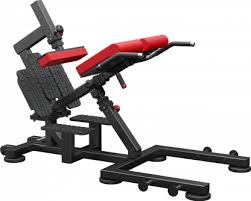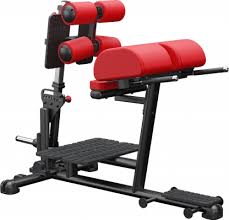There are a lot of options for buying a back extension now. The advent of remote-based training has opened a ton of options for equipment and there is a lot to consider now. Let us break down what we want to look for when we decide on a back extension.
We should lay out what a back extension is before we give criteria on which one to buy or look for. There are a couple of different options to consider here: isolated back extension or multi-purpose back extension. For isolated back extension, there are 45degree and 90degree options such as a glute ham. Multi-purpose back extensions come in the form of a glute-ham (back extension + glute ham), reverse hyper-based glute ham (reverse hyper + glute ham + back extension), or now portable multi-purpose Nordic bench (nordic bench + degree back extension). There is a right answer; it just depends on context and what is needed. Multi-purpose is always more appealing the pure utility but it comes at some sort of cost. For example, floor space with reverse hyper multi-purpose pieces or stability multi-purpose Nordic bench and stability. Alternatively, single-use machines can only do one thing and make that space less valuable due to the less utility.
For the record, I am an equipment snob. There is a difference between cheaply made equipment and higher quality equipment. I think it differs from name-brand luxury items in terms of cost and actual value. Higher-priced equipment has more value because it is better designed, more durable, and provides a more direct impact on what the intent of the machine was created for. If we are looking to develop a posterior chain from a hip-dominant or knee-dominant perspective the quality of the piece makes a difference and that difference comes at a cost.




But what is that increased specific value worth? If you do not personally like to use it in a progression for other exercises and overload back extensions, having a more robust option is not necessary. For me, it is. Stability matters a great deal for posterior chain movements. They are incredibly high-torque joints. If you are doing a back extension your capacity to externally load it is immense. That places a huge structural demand on the piece of equipment. If you are doing glute hams, you realize incredibly quickly how important stability is.
The other question is do you need the potential for options over the direct isolation of a joint or muscle group. This is the fundamental debate on machine-based exercises. How important is what we get from overloading that particular muscle or joint action relative to the loss of utility? If we need whatever the difference that isolated piece provides, it is very important. More options are not always better.
My decision is based on what is the best version I have used. I progress my movements through back extension and glute ham. It is a very valuable tool for me. The option of having an all-in-one is tempting but less valuable than what an isolated back extension or quality glute ham provides. I’ll take the option that facilitates what I want to do every time. All equipment is essentially tools to allow us to do our jobs better or more efficiently. I consider my programs a work of art and I am a craftsman, so I need the best tools to do the job.

